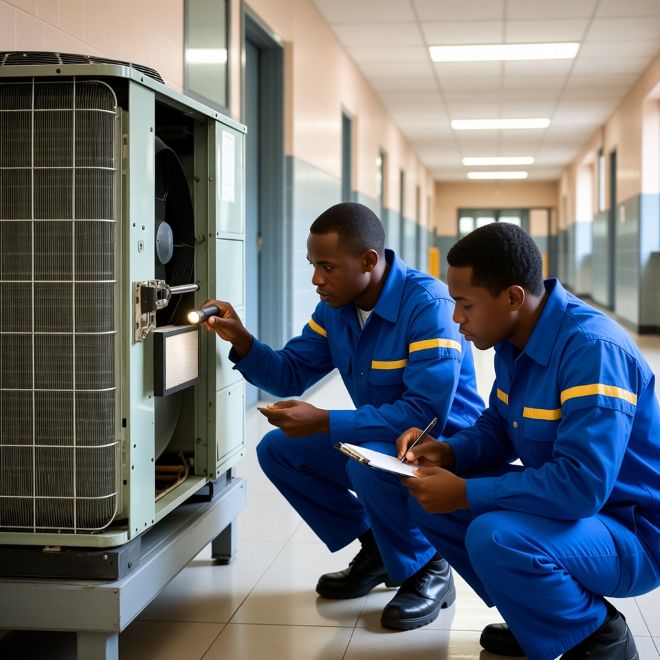
Good indoor air and stable temperatures help students stay focused, calm, and ready to learn. Many schools struggle with outdated heating and cooling systems that cannot keep up with daily demands. When classrooms get too warm or too cold, student performance drops and teachers find it harder to manage the room. Reliable HVAC systems help create learning environments where students can concentrate and feel comfortable.
Reliable comfort is linked to attendance, behavior, and overall well being, which is why many schools now take HVAC planning seriously. This is also where upgrades such as heat pump installation come into play because they offer efficiency and stable temperature control during busy school days. Schools depend on systems that can adjust quickly, handle crowded spaces, and maintain clean air while running for long hours.
Why Student Comfort Matters
Temperature swings in classrooms can affect memory, attention, and test performance. Students get distracted when they feel too warm or shiver in cold rooms. Comfortable learning spaces help reduce stress and improve classroom engagement. Teachers benefit too, since they can focus on instruction instead of fielding complaints about temperature or stale air. Schools studying heating options often look into resources like classroom comfort guides to understand how radiators and other systems impact learning.
Schools with consistent indoor comfort often report better classroom energy and fewer disruptions. This makes HVAC planning an essential part of a positive learning environment. Even small adjustments, such as better airflow or balanced humidity, can raise overall comfort levels.
How Ventilation Shapes Indoor Air Quality
Fresh air is vital in classrooms that pack dozens of students inside for hours. Without proper ventilation, carbon dioxide levels rise fast, which can lead to headaches and tiredness. Good airflow reduces airborne particles, lowers allergy triggers, and keeps air from feeling stale.
Modern systems use filters and controlled ventilation rates to keep classrooms healthier. Many schools now track indoor air quality as part of their safety plans. Cleaner air supports better breathing and fewer illnesses during the school year.
Scheduling HVAC Maintenance Around School Calendars
Maintenance is most effective when planned around school activities and seasonal changes. Summer breaks provide the best window for deep inspections and repairs. Winter breaks and long weekends are ideal for lighter preventive work.
- Check coils and filters before peak seasons.
- Clean ducts and vents when classrooms are empty.
- Plan tune ups early to prevent mid semester failures.
School districts that schedule maintenance in advance avoid surprise shutdowns. This reduces repair costs and helps systems last longer. A well maintained HVAC system also uses less energy, which lowers utility expenses.
Upgrading Equipment for Better Efficiency and Reliability
Outdated equipment often struggles to meet classroom demands. Many schools study their energy use before deciding which upgrades offer the biggest improvements. Modern systems provide better airflow, quieter operation, and more precise temperature control.
Upgrades such as sensors, timers, and automated controls help schools manage energy smarter. Smart thermostats can adjust temperatures when classrooms empty during recess or lunch. High efficiency options, including another mention of heat pump installation in context, help reduce long term operating costs while improving comfort.
Case Studies of Schools Saving Energy With Modern HVAC
Several school districts have reported major savings after modernizing their heating and cooling systems. One district cut its energy use by more than 20 percent after upgrading coils, ventilation fans, and outdated controls. Another saw fewer equipment breakdowns during winter once more efficient units were installed.
Many schools also noted improved air quality readings after their upgrades. Cleaner air helped reduce absenteeism during peak allergy months. These improvements show how HVAC modernization can support both student health and district budgets.
Conclusion
Healthy learning spaces depend on comfort, clean air, and reliable equipment that runs well during long school days. Schools that prioritize maintenance and modern upgrades create environments where students can stay focused and teachers can work without constant disruptions. Energy savings and better reliability are strong reasons for districts to study improvements such as heat pump installation as part of their long term planning.
